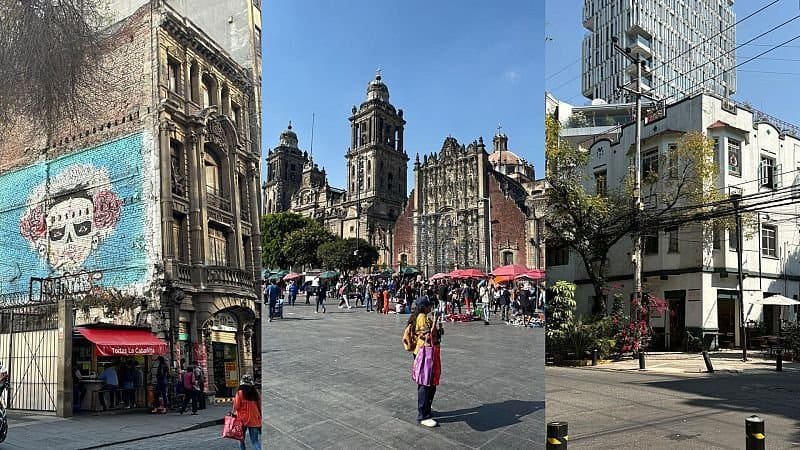Contents
Protests Against Gentrification and Mass Tourism in Mexico City
Residents of Mexico City recently took to the streets in a significant protest, expressing their anger over gentrification and the impact of mass tourism. Experts suggest that these tensions have been building for years, fueled by government policies and a push to attract digital nomads. The situation has intensified as the city continues to grapple with rising living costs and the displacement of long-time residents.
The protests were sparked by criticism from Mexican President Claudia Sheinbaum, who claimed that the demonstrations had a xenophobic tone. This has reignited discussions about the growing presence of Americans in the city. Many locals feel they are being priced out of their neighborhoods, partly due to a 2022 decision made by Sheinbaum during her tenure as mayor. She signed an agreement with Airbnb and UNESCO to promote tourism and attract remote workers, despite concerns about the effects of short-term rentals on housing availability.
During the recent demonstration, hundreds of protesters marched through key tourist areas of Mexico City, holding signs that read “Gringo: Stop stealing our home” and “Housing regulations now!” Their frustrations stem from years of mass tourism and increasing rent prices across large parts of the city. The influx of foreigners began around 2020, when many Americans moved to Mexico City to work remotely, escape pandemic restrictions, and take advantage of lower living costs.
Since then, neighborhoods like Roma and Condesa—known for their cafes, markets, and vibrant culture—have become increasingly populated by foreign tourists and remote workers. This shift has led to a surge in holiday rentals, which in turn has driven up housing prices. According to Inside Airbnb, a nonprofit organization that tracks the impact of the platform, there are currently over 26,000 properties listed on Airbnb in Mexico City. This number is higher than in New York City (36,000) but lower than in Barcelona (19,000), where similar protests have also occurred.
Experts argue that the rise in gentrification is due to a combination of factors, including a shortage of affordable housing and long-standing government failures to regulate the housing market. Enforcement of existing regulations has been weak, allowing companies like Airbnb to exploit the system. As a result, English is becoming more common in certain neighborhoods, and some groups have described this phenomenon as a form of “neo-colonialism.”
How to Be a Responsible Tourist in Mexico City
Despite the challenges, travelers should still feel welcome in Mexico City, provided they visit in a way that supports the local community. One approach is to stay for longer periods rather than hopping from place to place. This allows visitors to explore more diverse areas of the city instead of just the popular attractions.
Mexico City is home to over 150 museums, so there’s no excuse for sticking to just the most famous ones. For example, after visiting the National Museum of Anthropology, consider exploring the Museo de Sitio Xólotl, which offers access to ancient ruins at Tenayuca. Another option is the National Biodiversity Pavilion, which showcases Mexico’s natural heritage. Animal lovers can also visit Axolotitlán, an axolotl museum located within Tarango Park.
Art enthusiasts might enjoy the Olivia Foundation, an exhibition space focused on Postwar Abstraction by female painters. Visits to this venue require reservations, so it’s best to plan ahead.
Best Neighborhoods to Stay in Mexico City
When choosing accommodation, it’s advisable to opt for small, family-run hotels or guest houses. These establishments often provide a more authentic experience and support the local economy. Big chains and all-inclusive resorts may offer a more international atmosphere, but they are less likely to employ local staff.
The local tourist board recommends several walking-friendly neighborhoods that make for great bases, avoiding the crowded historic center and areas like Roma and Condesa. San Rafael offers a laid-back sophistication with a dynamic art scene, while San Ángel is known for its gardens, orchards, and beautiful villas.
Coyoacán is another popular neighborhood, thanks to the Frida Kahlo Museum, but the surrounding streets are quieter and less crowded. Similarly, Xochimilco is famous for its canal boats, but visitors who venture beyond the main attractions will find a charming mix of bridges, alleys, and canalside cafes, along with a vibrant street art scene.




